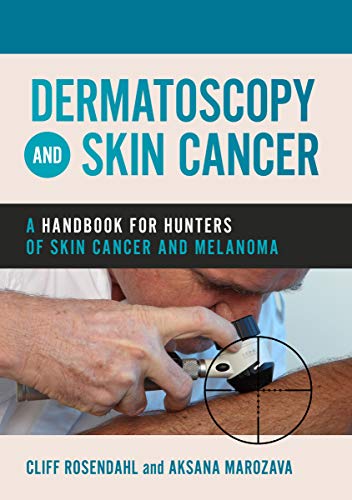(PDF) Dermatoscopy and Skin Cancer by Rosendahl
$18.00
Download instantly Dermatoscopy and Skin Cancer – A handbook for hunters of skin cancer and melanoma by Cliff Rosendahl, Aksana Marozava. It is ebook in PDF format.
ISBN-10: 1911510339 ISBN-13: 9781911510338
Preview
This is the PDF eBook version for Dermatoscopy and Skin Cancer – A handbook for hunters of skin cancer and melanoma by Cliff Rosendahl, Aksana Marozava
Table of Contents
Chapter 1: Introduction to dermatoscopy
1.1 Why use a dermatoscope?
1.2 What is a dermatoscope?
1.3 Colours in dermatoscopy
1.4 Differences between polarised and non-polarised dermatoscopy
1.5 Uses of dermatoscopy for conditions other than tumours
Chapter 2: Skin – the organ
2.1 Skin as an organ
2.2 Embryology of skin
2.3 The microanatomy of skin
Chapter 3: Dermatopathology for dermatoscopists
3.1 From the scalpel to the microscope
3.2 The histology of normal skin
3.3 Terminology used in dermatopathology
3.4 Dermatoscopic histological correlation of neoplastic lesions
Chapter 4: The language of dermatoscopy: naming and defining structures and patterns
4.1 The evolution of metaphoric terminology for dermatoscopic structures and patterns
4.2 Revised pattern analysis of lesions pigmented by melanin
4.3 Patterns in revised pattern analysis
4.4 The process of revised pattern analysis
4.5 Revised pattern analysis applied to lesions with white structures
4.6 Revised pattern analysis applied to lesions with orange, yellow and skin-coloured structures
4.7 Revised pattern analysis applied to vessel structures and patterns
4.8 The cognition of dermatoscopy
Chapter 5: The skin examination
5.1 The skin check consultation
5.2 Photo-documentation
5.3 Patient safety: tracking specimens and self-audit
5.4 The lives of lesions
Chapter 6: Chaos and clues: a decision algorithm for pigmented lesions
6.1 Chaos and clues
6.2 Chaos
6.3 Clues
6.4 Exceptions
6.5 Excluding unequivocal seborrhoeic keratoses from biopsy
Chapter 7: Prediction without pigment: a decision algorithm for non-pigmented skin lesions
7.1 Prediction without pigment
7.2 Prediction without pigment: short version
7.3 Conclusion
Chapter 8: Pattern analysis
8.1 Revised pattern analysis – a diagnostic algorithm
8.2 An aide-memoire for revised pattern analysis of pigmented skin lesions
8.3 Applying the aide-memoire in practice
Chapter 9: Dermatoscopic features of common and significant lesions: pigmented and non-pigmented
9.1 Melanoma: pigmented and non-pigmented
9.2 Melanocytic naevi: pigmented and non-pigmented
9.3 Basal cell carcinoma: pigmented and non-pigmented
9.4 Benign keratinocytic lesions
9.5 Actinic keratosis, squamous cell carcinoma in situ and squamous cell carcinoma
9.6 Dermatofibroma and dermatofibrosarcoma protuberans
9.7 Haemangioma and other vascular lesions
9.8 Merkel cell carcinoma
9.9 Atypical fibroxanthoma
9.10 Adnexal tumours
9.11 Neurofibroma
9.12 Molluscum contagiosum
9.13 Cutaneous lymphoma
9.14 Kaposi sarcoma
Index




